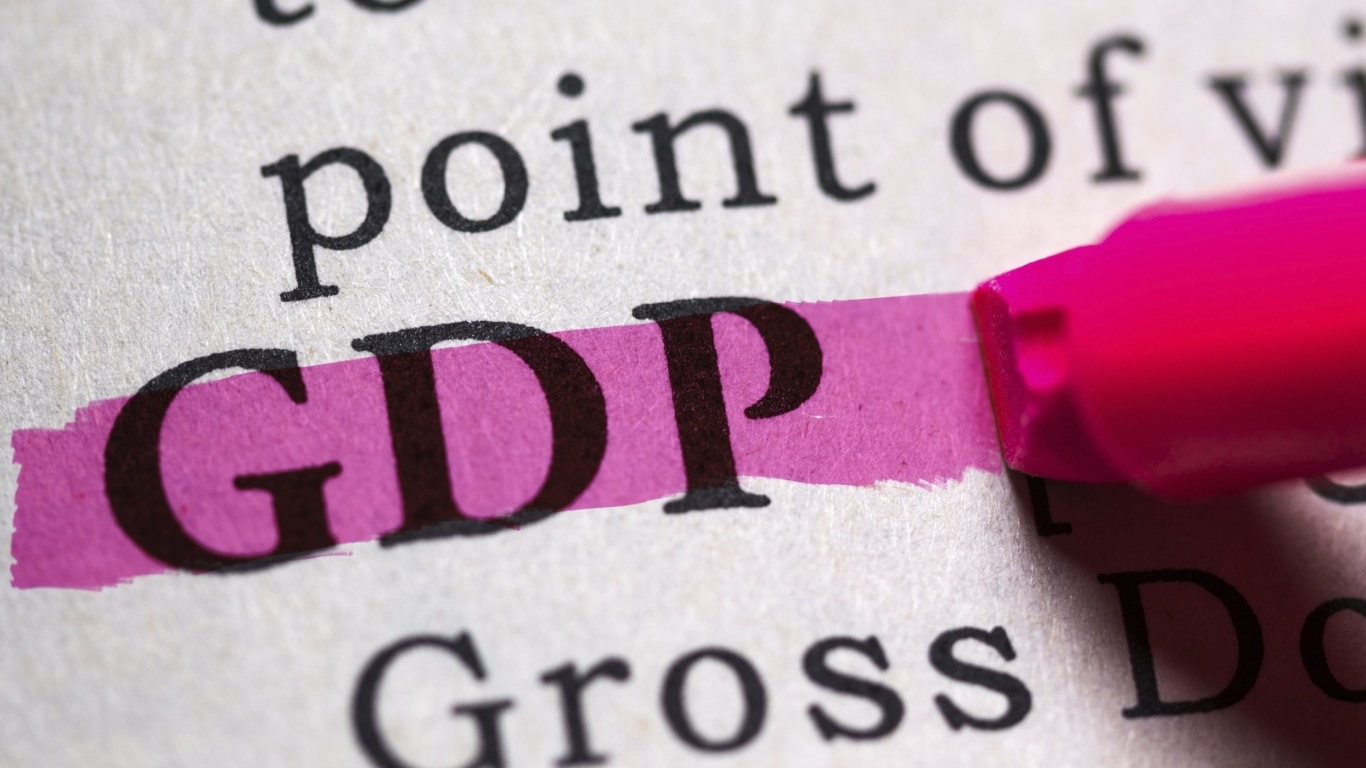Economy
Even at Almost $20 Trillion, US GDP Growth Slower Than Expected So Far in 2018

Published:
Last Updated:

There is no cleaner measurement of an underlying economy than the quarterly and annualized readings on gross domestic product. Unfortunately, the U.S. economic growth picture showed a revision down to 2.0% for the first-quarter U.S. GDP. It appears as though weak consumer spending, which makes up the majority of U.S. GDP, was weaker than had been expected.
Dow Jones (Wall Street Journal) and Reuters were both calling for the GDP revision to remain flat at the prior 2.2% growth.
The increase in real GDP in the first quarter reflected positive contributions from nonresidential fixed investment, personal consumption expenditures, exports, federal government spending and state and local government spending.
Household spending rose by 0.9% in the first quarter, revised down from the prior estimate of 1.0% growth. Business investment also looks to have restocked slower than had been expected, but business investment was actually the strongest going back to 2014, as companies are using their tax-cuts to their advantage.
Other notes on the final revision for the first quarter’s GDP report:
While this is a disappointment in the GDP growth metrics, there are some seasonal issues that come into play during the first quarter of every year. It is also usually the case that GDP revisions matter less and less to the financial markets due to the notion that the data gets older and older. This data now reflects roughly 90 days ago and was first projected 60 days ago.
Start by taking a quick retirement quiz from SmartAsset that will match you with up to 3 financial advisors that serve your area and beyond in 5 minutes, or less.
Each advisor has been vetted by SmartAsset and is held to a fiduciary standard to act in your best interests.
Here’s how it works:
1. Answer SmartAsset advisor match quiz
2. Review your pre-screened matches at your leisure. Check out the advisors’ profiles.
3. Speak with advisors at no cost to you. Have an introductory call on the phone or introduction in person and choose whom to work with in the future
Thank you for reading! Have some feedback for us?
Contact the 24/7 Wall St. editorial team.